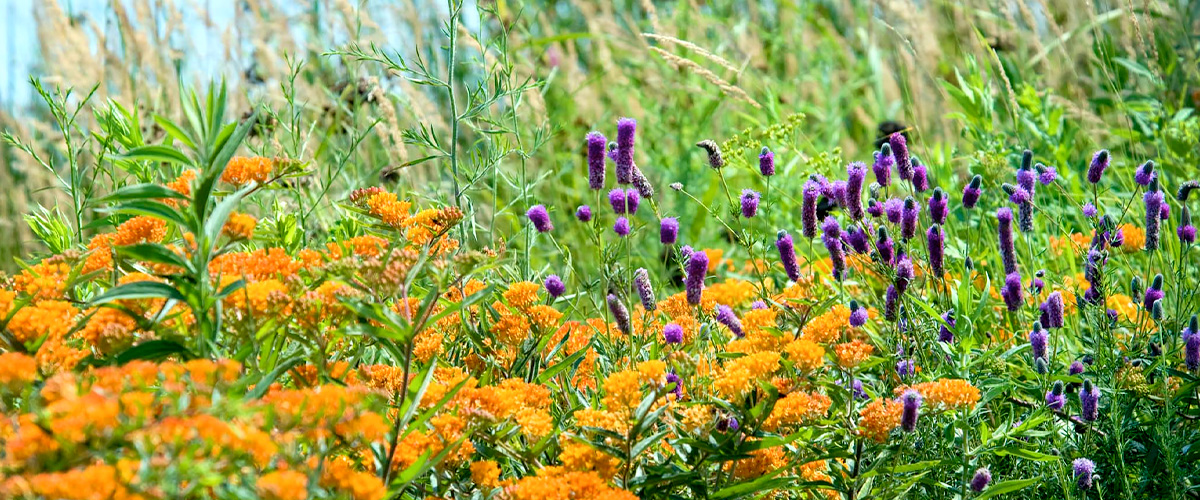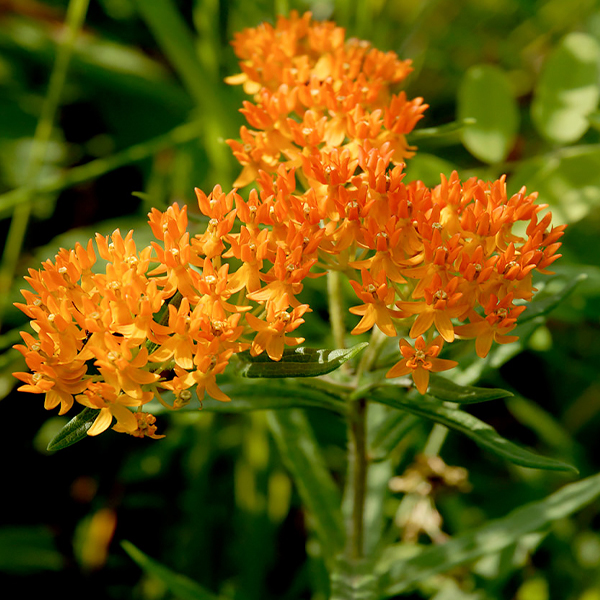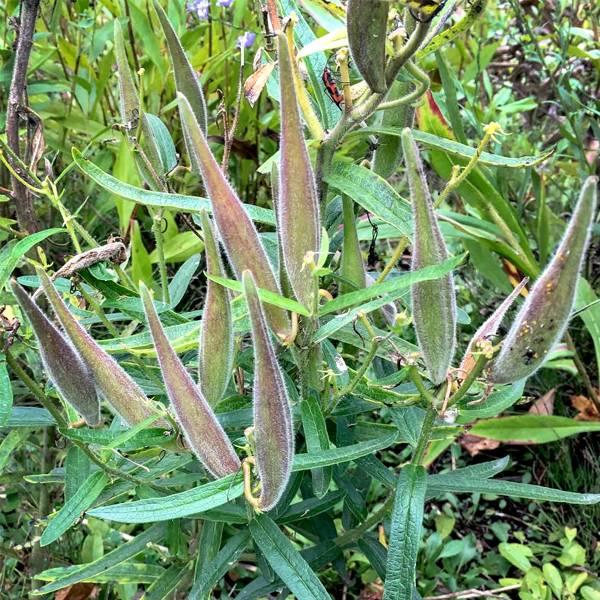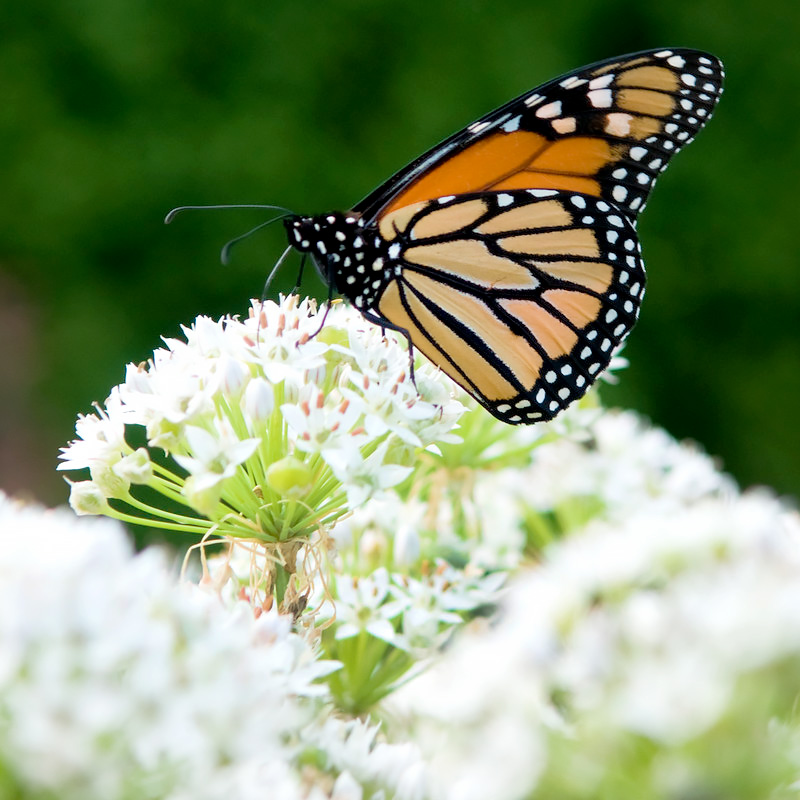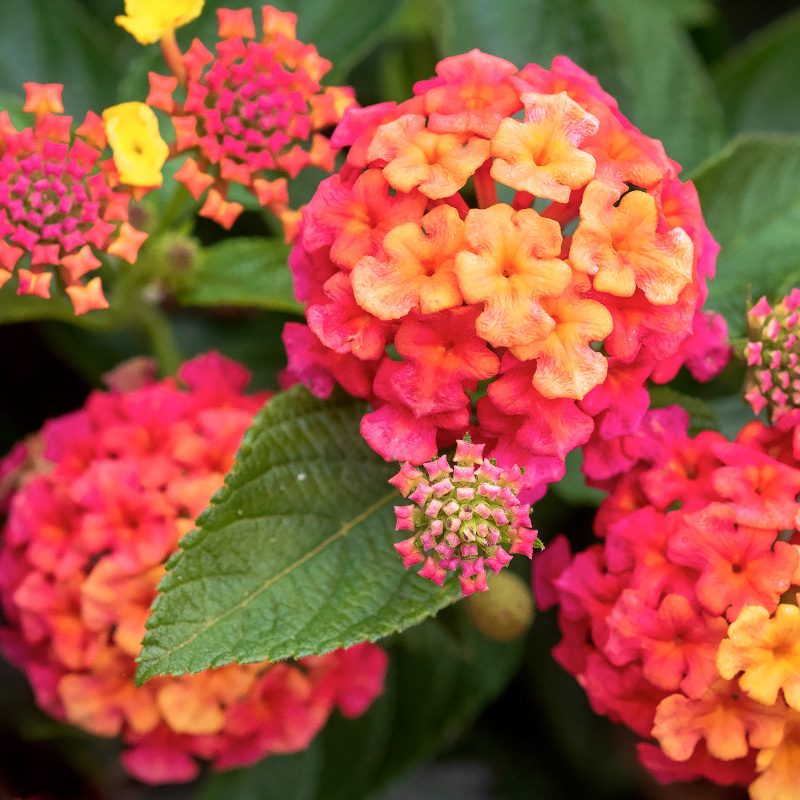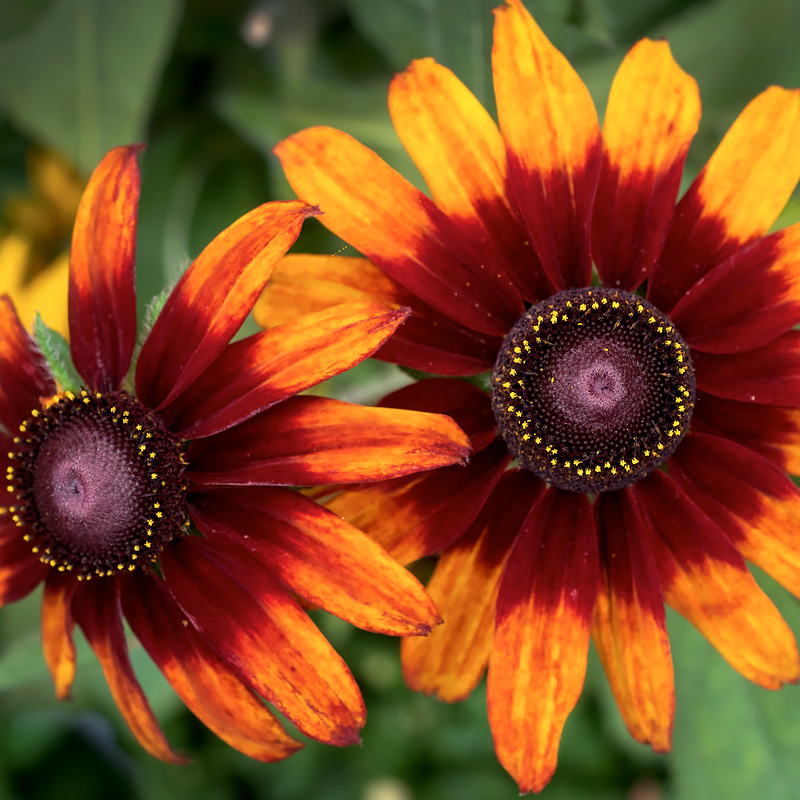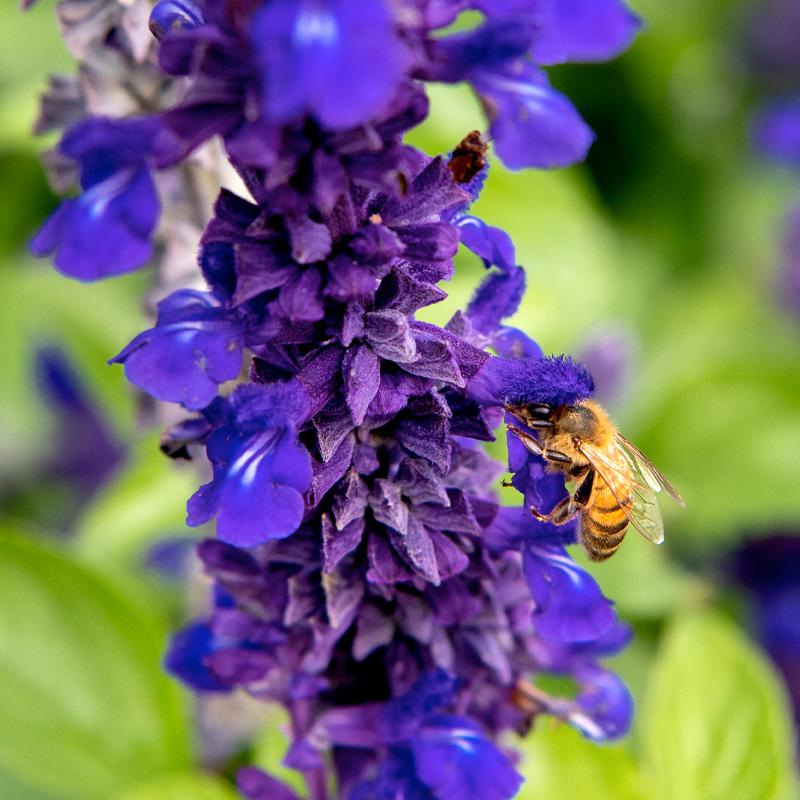

Butterfly Weed
Asclepias tuberosa
Take a stroll through a Midwestern prairie in high summer and you’ll likely find patches of vibrant red-orange flowers. The brilliant blossoms are those of butterfly milkweed or butterfly weed—curious common names for Asclepias tuberosa, which isn’t a weed at all. A more suitable name might be “butterfly magnet” because swallowtails, fritillaries, viceroys, skippers, monarchs, and a host of other winged wonders flutter over the flowers in search of nectar all summer long.
A native perennial, butterfly weed is found in prairies, restored natural areas, embankments, along roadsides and railroad tracks, old fields, and historic cemeteries throughout Illinois. In its native habitat, it grows in sandy oak savannas and dry prairies.
It’s no surprise that butterfly weed was named the 2017 Perennial Plant of the Year. It’s a welcome addition to the home garden. It requires little maintenance, tolerates drought, resists disease, and attracts many pollinators. Cultivars include Asclepias ‘Hello Yellow’ (with primrose yellow flowers), ‘Western Gold Mix’ (featuring golden orange flowers), and ‘Gay Butterflies’ (with orange, red, and yellow flowers). Like common milkweed, the flowers on butterfly weed are lightly fragrant.
A Magnet for Monarchs
A member of the milkweed genus Asclepias (uh-SKLEE-pee-us), butterfly weed is a host plant for the female monarch butterfly, which may lay its eggs on the underside of the leaves. Monarch caterpillars, milkweed beetles, milkweed bugs, aphids, and a few other insects will chew the leaves, but rarely defoliate or harm the plants.
Milkweeds are named for their milky sap, which contains latex and complex chemicals (cardenolides) that make the plants unappealing to most animals, including deer and rabbits. Unlike most other milkweeds, butterfly weed does not produce thick, white sap. Instead, the sap is thin and almost clear.
Butterfly weed ranges in height from 1 to 3 feet tall, which makes it a good plant for the middle of a sunny border. Plants form stout, bushy clumps, unlike common milkweed, which can form colonies with underground roots.
Dense clusters of flowers—which appear from early June through late August—provide nectar for other pollinators. These include native, metallic green sweat bees and cuckoo bees, honeybees, flies, beetles, and moths. Hummingbirds feed at the blossoms as well.
In Your Garden
Butterfly weed is suitable for sunny perennial gardens, butterfly and bee gardens, cottage gardens, native plant or prairie gardens, dry slopes, and along walkways, foundations, or patios. Choose a permanent spot that receives full sun and has well-drained soil. Like other native prairie plants, butterfly weed forms a long, deep taproot that makes transplanting difficult.
The plants are warm-season perennials—the soil must be warm for the leaves to emerge in late spring. Although butterfly weed is drought-tolerant, water young transplants while they become established. The plants tend to bloom for several weeks but deadheading (removing spent flowers) can produce another round of flowers.
The dried seedpods are packed with dark seeds attached to silky white hairs—like parachutes—that take flight when the pods split open in late summer. To prevent the wind-borne seeds from sowing in your garden, remove the seedpods. (Give them to fellow gardeners who want to start a butterfly garden.) Allow the rest of the plant to remain standing for winter interest. The stems can be removed in early spring when you tidy the garden.
Companion Plants
Butterfly weed is a beautiful partner for many other perennials and annuals that provide nectar or pollen. Pair butterfly weed with plants that have the same needs—full sun and well-drained soil. Make the combinations interesting by pairing plants with long panicles of flowers. For example, pair the fragrant, purple-flowered butterfly bush (Buddleia davidii ‘Dark Knight’) with Asclepias tuberosa and you’ll have a striking contrast of flower shapes and colors.
Perennial partners with similar cultural needs include Liatris, Allium, Perovskia, Penstemon, Achillea, Agastache, Digitalis, Monarda, lavender, catmint, Buddleia, Echinops, Baptisia, Eryngium, Achillea, Rudbeckia, Solidago ‘Fireworks’, and small native grasses, such as prairie dropseed (Sporobolus heterolepis). All of these perennials attract beneficial pollinators and native insects. Good annual plant combinations include Lantana, Zinnia, Salvia, Cosmos, bronze fennel, fernleaf dill, sunflowers, Tithonia, Nicotiana, and Cleome.
Discover where to see the Garden’s butterfly milkweed.


